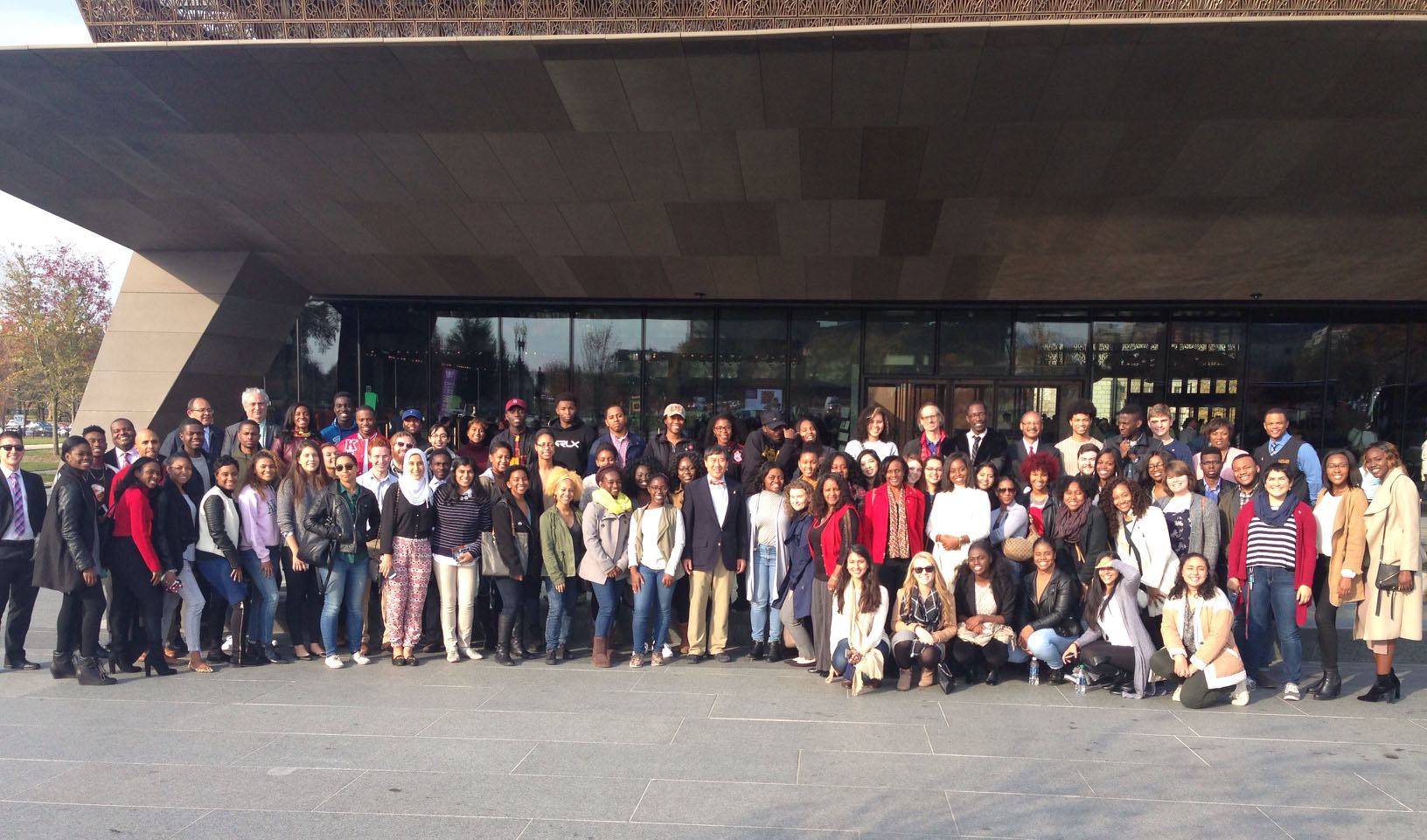University of Maryland President Wallace Loh paused Wednesday to take in the silver letters that spanned the wall of the last room in the National Museum of African American History and Culture.
“I, Too, Am America,” it read, signaling Langston Hughes’ famous poem on African-Americans’ centrality to the American narrative.
“I’ve learned more about my country here than I have my whole life,” said Loh, holding back tears. “This is a very difficult time for all of us, but I think I still remain hopeful.”
Loh took about 100 students and 20 faculty members to visit the museum in Washington on Wednesday. The trip encouraged both university students and faculty to engage in difficult but necessary conversations about race and the oppression and resilience that define the African-American experience.
The museum, which opened Sept. 24, documents the 400-year history of African-Americans through its extensive collection of more than 36,000 artifacts. These items span over the entirety of American history, from whips used by slave owners to a dress worn by Michelle Obama.
The floors are chronologically arranged, starting with the slave trade in the basement and working toward contemporary America on the top floor. Navigating through the dark, narrow halls in the basement, which depict the realities of slavery in America, was a “sobering” experience, said Kris Marsh, a sociology professor at this university.
“It helps you understand how history is whitewashed in a lot of ways,” Marsh said. “The museum did a really good job of doing an accurate, historical depiction of blacks in America. That historical depiction comes with a lot of pain, a lot of sorrow, a lot of angst and anxiety.”
As visitors move through the museum’s levels — dedicated to Reconstruction, the Civil Rights movement and so on — the rooms become more spacious and well lit.
The experience culminates with a bright top floor celebrating African-American achievements in arts, sports and politics. Among the array of artifacts in the museum were items such as Muhammad Ali’s boxing gloves and Jimi Hendrix’s vest.
“Upstairs I was like, ‘Yes! I’m not giving my black back. This is why I’m unapologetically black,'” Marsh said.
Many students said they couldn’t help but notice a strong parallel between current events and historical moments presented in the museum. Issues protesters took on years ago, such as police violence toward blacks, are still found in present day politics, said Joshua Singer, a senior behavioral and community health major.
“You look at the protests during the Civil Rights movement and compare it to today — it looks exactly the same, just in black and white,” Singer said.
After Donald Trump secured the presidency last week in one of the most divisive elections in recent history, the museum is a reminder of how important it is for students to learn about African-American’s contributions and experiences before deciding how to move forward, Marsh said.
“We need to talk about what the next four years are going to look like and how marginalized groups are going to feel and how they’re going to be addressed,” Marsh said. “This is a great space to really start having those conversations.”
Langston Hughes’ poem serves as a reminder of the importance of unity in America, Loh said.
“Way back when [Langston Hughes] wrote this, those issues were the same — who belongs and who’s excluded from the country,” he said. “‘Make America Great’ — we’ve always been a great country so long as we bring people together, and we forget that. I think this museum is a reminder of that.”
Loh had taken a smaller group of about 20 students to the museum in mid-October, and had been particularly moved by a room that housed a statue of Thomas Jefferson against a wall of more than 600 bricks — each representing one of his slaves.
In large letters on the wall behind Jefferson was the portion of the Declaration of Independence that read, “All men are created equal.”
The room had sparked a difficult conversation about race on the ride back to the campus, Loh said during a Residence Hall Association meeting on Tuesday before the trip.
It motivated him to take 120 more people back to the museum this past Wednesday.
“It’s something we all need to experience,” Loh said. “I wish I could bring 26,000, [but] 120 tickets was the most I could get.”
The message of the museum is so important to present-day America that visitors may need to spend hours and many visits to absorb the full impact of it, he said.
“This is my second or third time and it’s still just an overwhelming experience,” Loh said. ” … If there’s one country I want to be in, it’s this country because of its ideals. We fall short of its ideals, but it’s up to our next generation to bring us back together again.”



